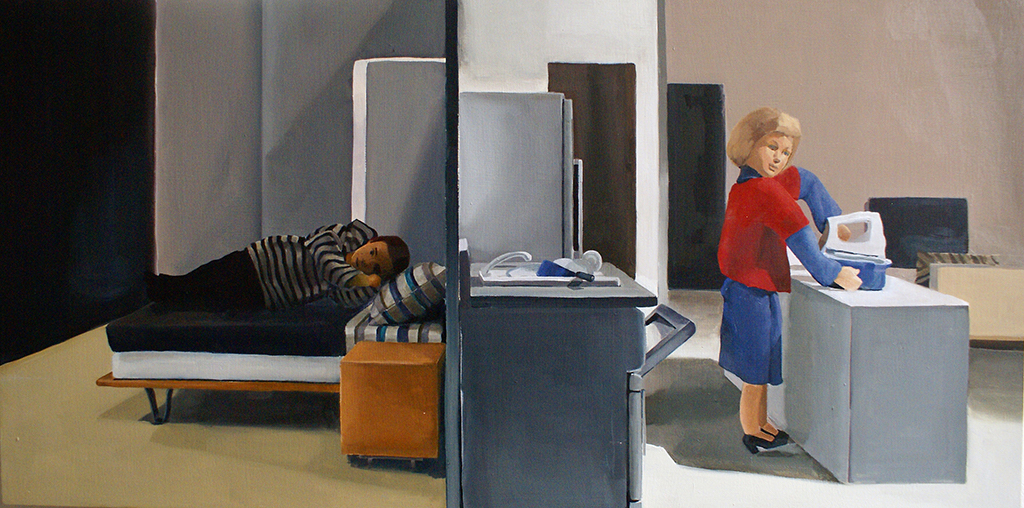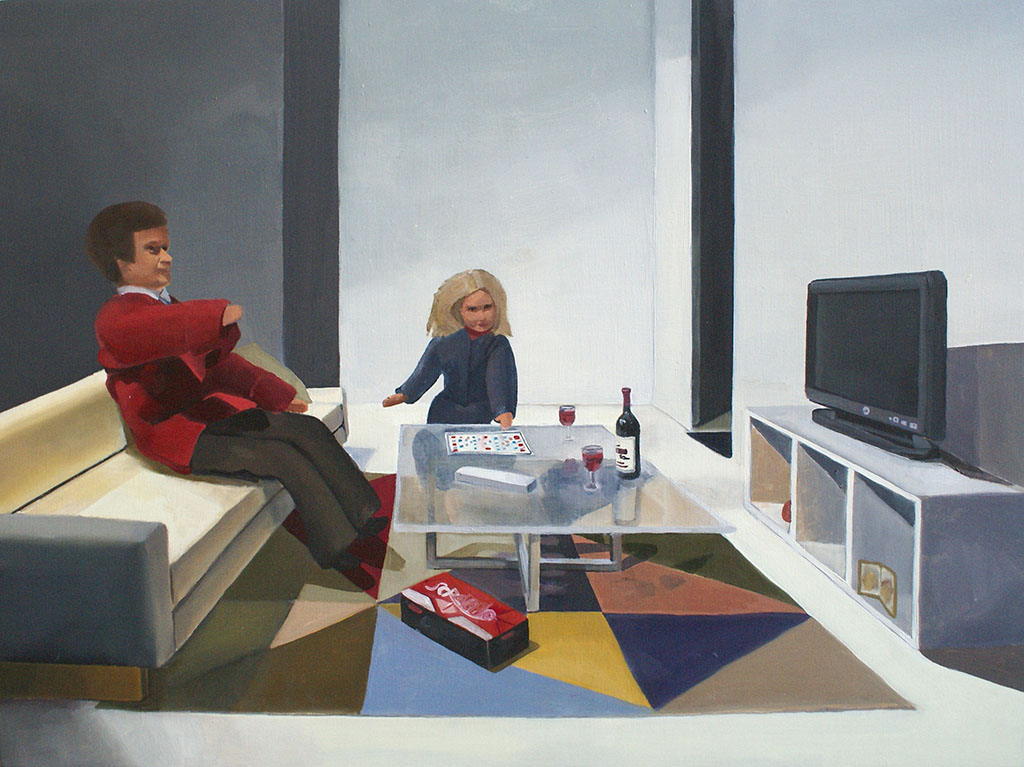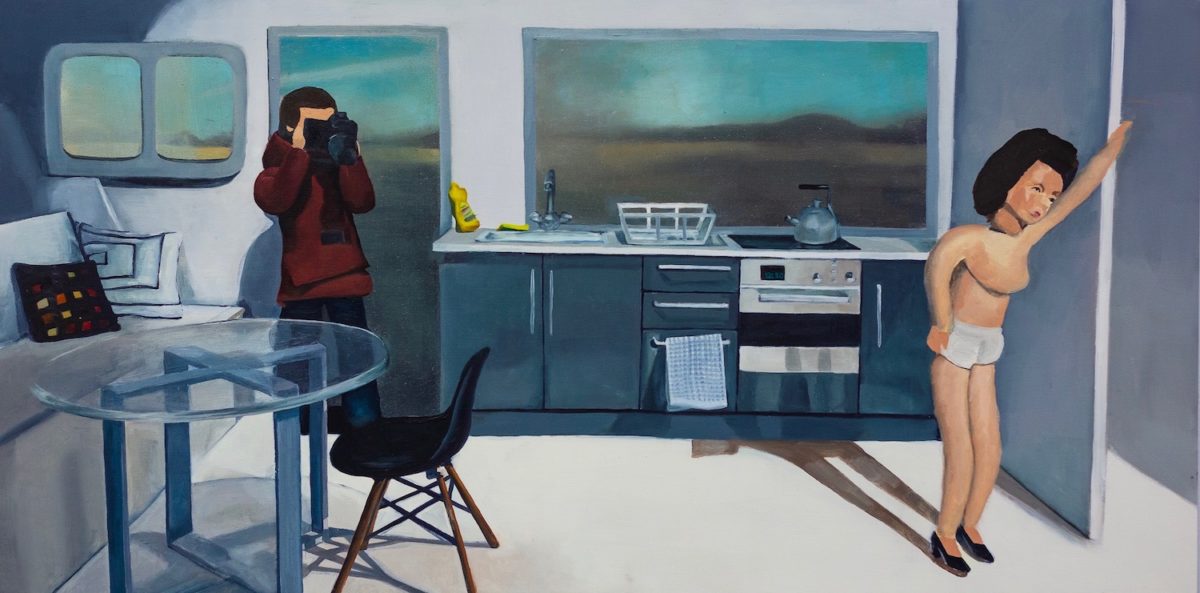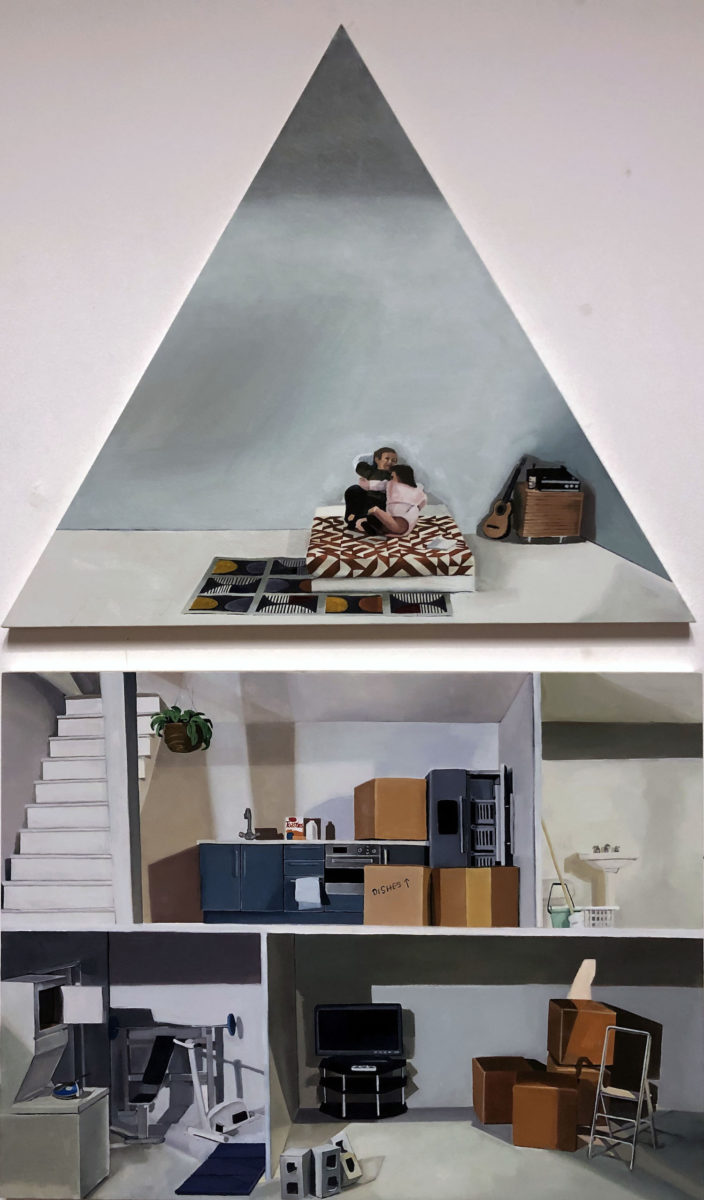
New York-based artist Tara Kopp’s oil-painted vignettes take the concept of a doll’s house and the make-believe that comes along with it and injects it with a cold dose of reality. The artist stages scenes using miniature dolls and furniture, and then paints those scenes in soft brushstrokes and minute detail to create emotive, haunting tableaus.
“The paintings become a narrative device to address the personal, social and cultural perspectives involving issues of connection and isolation,” says Kopp. Inspired by Edward Hopper, the artist uses light, shadow and muted colours to portray the tensions in contemporary life.

Kopp’s doll-like characters are “surrogates for the urban dweller” and her scenes are often placed in modern apartments or trailer homes. The paintings are composed like doll-house cutaways where we see multiple characters across different rooms. Kept relatively stripped back, Kopp makes sure to include some recognisable “homely” touches such as handbags hanging on the back of chairs and Chinese takeaway containers on the table.
“Each painting is a page from a personal and intimate diary filled with mundane moments, silences, and uneasy encounters”
This offers a sense of familiarity to her works, enhanced by the everyday activities carried out by the figures that often allude to traditional roles. This subtle divide adds a slightly ominous feeling to each image, which feels entirely intentional. “From modern architecture and design to home appliances and technology, my work appropriates recognisable symbols to question expectations of adulthood around activities in the home,” explains the artist.
- After Work and 2nd Floor
The beauty in Kopp’s work is the delicate emotion she’s able to convey despite her subjects and their miniature world simply mimicking the real world and our lives. This sense of intimacy is achieved through the inclusion of the artist’s own experiences within each work. “Each painting is a page from a personal and intimate diary filled with mundane moments, silences, and uneasy encounters,” explains Kopp. “Each prop tells a story, while the stark and fragmented structures build a tension among the characters.”
















